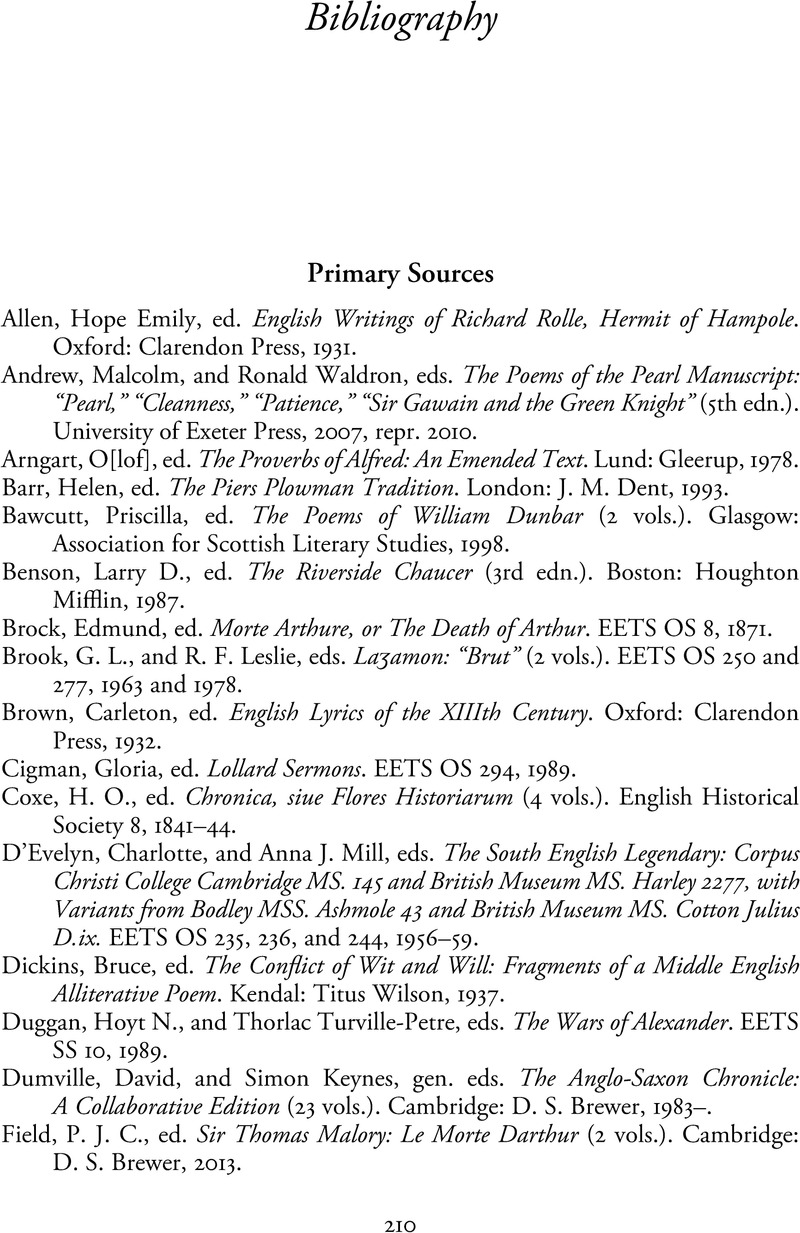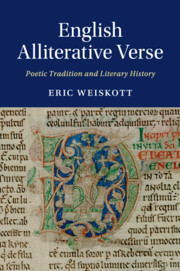Book contents
- English Alliterative Verse
- Cambridge Studies in Medieval Literature
- English Alliterative Verse
- Copyright page
- Dedication
- Contents
- Figures
- Acknowledgments
- Abbreviations
- Evolution of the Alliterative B-Verse, 650–1550
- Introduction: The Durable Alliterative Tradition
- Chapter 1 Beowulf and Verse History
- Chapter 2 Prologues to Old English Poetry
- Chapter 3 Lawman, the Last Old English Poet and the First Middle English Poet
- Chapter 4 Prologues to Middle English Alliterative Poetry
- Chapter 5 The Erkenwald Poet’s Sense of History
- Chapter 6 The Alliterative Tradition in the Sixteenth Century
- Conclusion: Whose Tradition?
- Note to the Appendices
- Book part
- Glossary of Technical Terms
- Notes
- Bibliography
- Index
- Cambridge Studies in Medieval Literature
- References
Bibliography
Published online by Cambridge University Press: 09 November 2016
- English Alliterative Verse
- Cambridge Studies in Medieval Literature
- English Alliterative Verse
- Copyright page
- Dedication
- Contents
- Figures
- Acknowledgments
- Abbreviations
- Evolution of the Alliterative B-Verse, 650–1550
- Introduction: The Durable Alliterative Tradition
- Chapter 1 Beowulf and Verse History
- Chapter 2 Prologues to Old English Poetry
- Chapter 3 Lawman, the Last Old English Poet and the First Middle English Poet
- Chapter 4 Prologues to Middle English Alliterative Poetry
- Chapter 5 The Erkenwald Poet’s Sense of History
- Chapter 6 The Alliterative Tradition in the Sixteenth Century
- Conclusion: Whose Tradition?
- Note to the Appendices
- Book part
- Glossary of Technical Terms
- Notes
- Bibliography
- Index
- Cambridge Studies in Medieval Literature
- References
Summary

- Type
- Chapter
- Information
- English Alliterative VersePoetic Tradition and Literary History, pp. 210 - 227Publisher: Cambridge University PressPrint publication year: 2016



